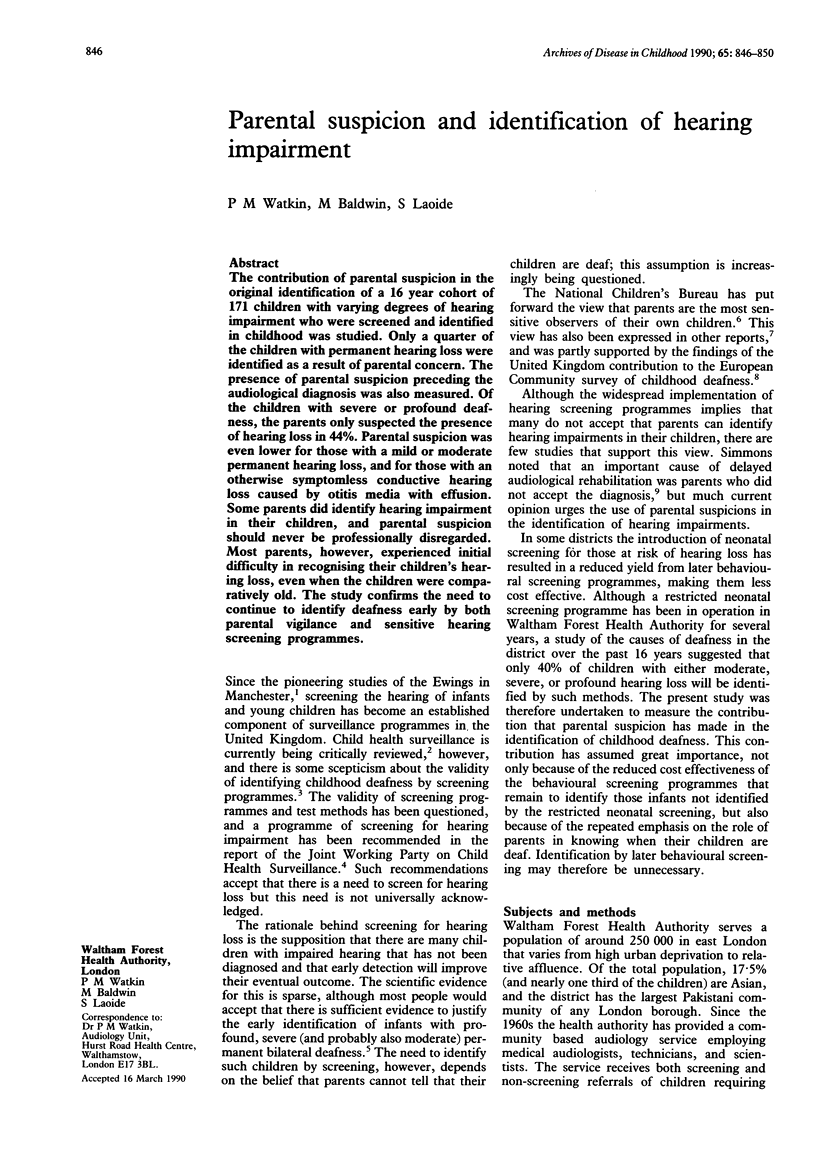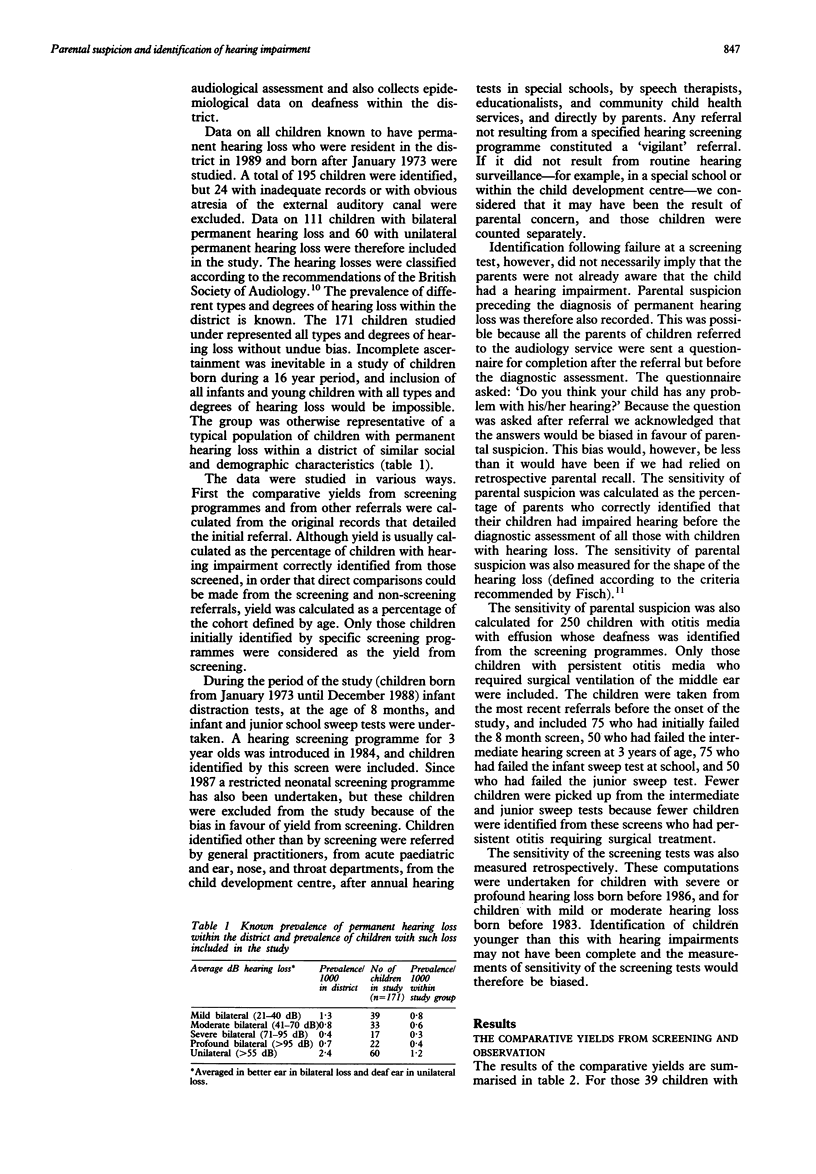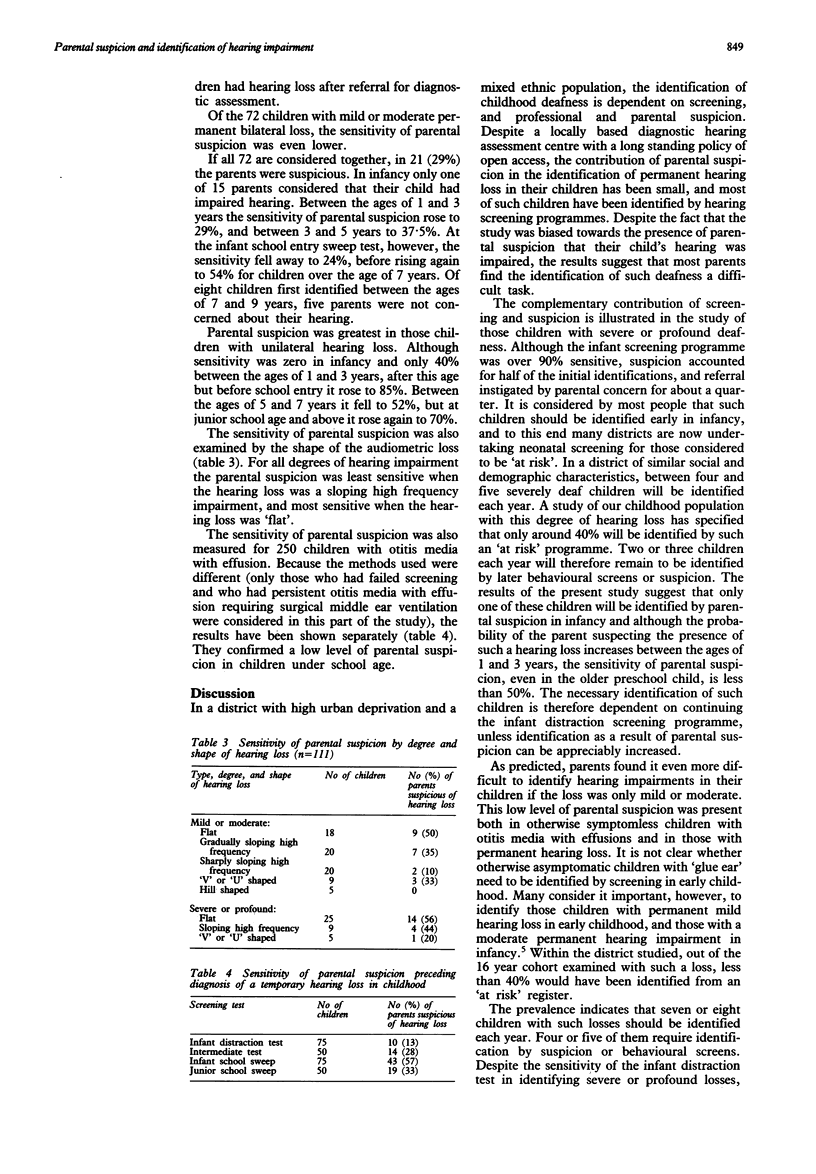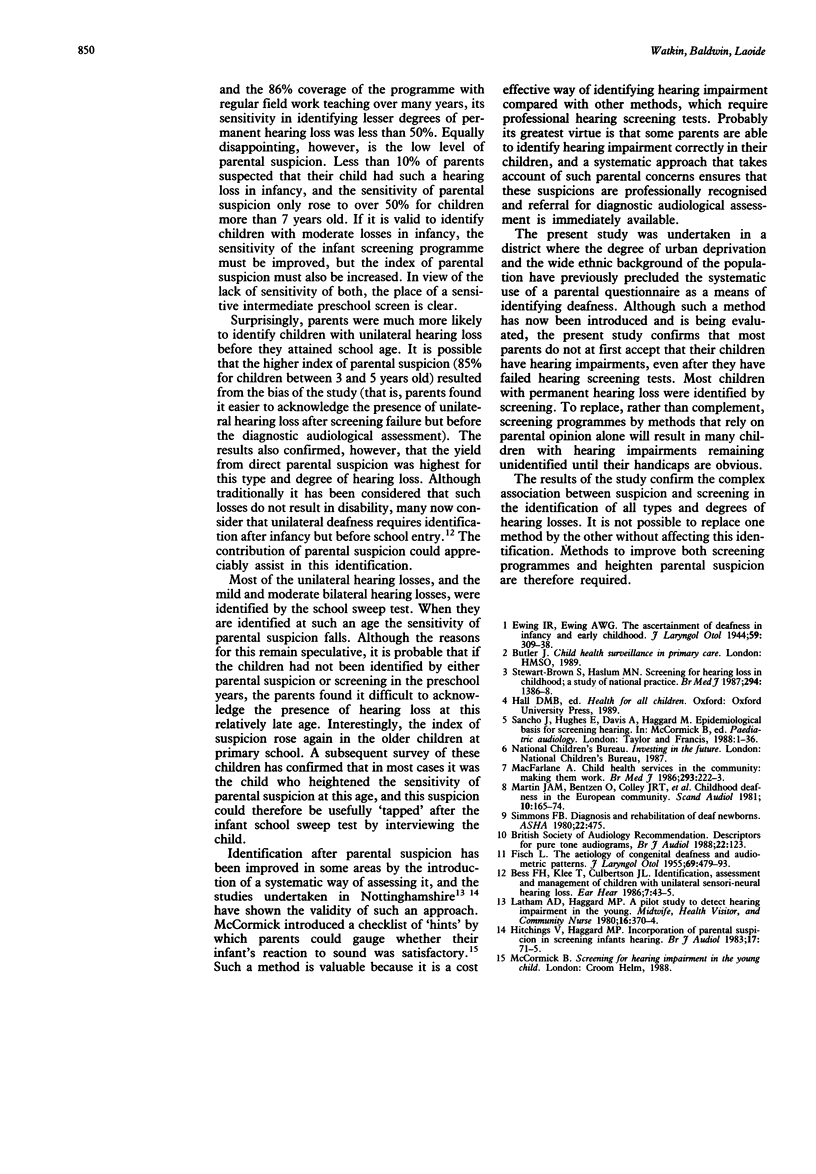Abstract
The contribution of parental suspicion in the original identification of a 16 year cohort of 171 children with varying degrees of hearing impairment who were screened and identified in childhood was studied. Only a quarter of the children with permanent hearing loss were identified as a result of parental concern. The presence of parental suspicion preceding the audiological diagnosis was also measured. Of the children with severe or profound deafness, the parents only suspected the presence of hearing loss in 44%. Parental suspicion was even lower for those with a mild or moderate permanent hearing loss, and for those with an otherwise symptomless conductive hearing loss caused by otitis media with effusion. Some parents did identify hearing impairment in their children, and parental suspicion should never be professionally disregarded. Most parents, however, experienced initial difficulty in recognising their children's hearing loss, even when the children were comparatively old. The study confirms the need to continue to identify deafness early by both parental vigilance and sensitive hearing screening programmes.
Full text
PDF




Selected References
These references are in PubMed. This may not be the complete list of references from this article.
- Bess F. H., Klee T., Culbertson J. L. Identification, assessment, and management of children with unilateral sensorineural hearing loss. Ear Hear. 1986 Feb;7(1):43–51. doi: 10.1097/00003446-198602000-00008. [DOI] [PubMed] [Google Scholar]
- FISCH L. The aetiology of congenital deafness and audiometric patterns. J Laryngol Otol. 1955 Jul;69(7):479–493. doi: 10.1017/s0022215100050969. [DOI] [PubMed] [Google Scholar]
- Hitchings V., Haggard M. P. Incorporation of parental suspicions in screening infants' hearing. Br J Audiol. 1983 May;17(2):71–75. doi: 10.3109/03005368309078910. [DOI] [PubMed] [Google Scholar]
- Latham A. D. A pilot study to detect hearing impairment in the young. Midwife Health Visit Community Nurse. 1980 Sep;16(9):370–374. [PubMed] [Google Scholar]
- Macfarlane A. Child health services in the community: making them work. Br Med J (Clin Res Ed) 1986 Jul 26;293(6541):222–223. doi: 10.1136/bmj.293.6541.222. [DOI] [PMC free article] [PubMed] [Google Scholar]
- Martin J. A., Bentzen O., Colley J. R., Hennebert D., Holm C., Iurato S., de Jonge G. A., McCullen O., Meyer M. L., Moore W. J. Childhood deafness in the European community. Scand Audiol. 1981;10(3):165–174. doi: 10.3109/01050398109076177. [DOI] [PubMed] [Google Scholar]
- Simmons F. B. Diagnosis and rehabilitation of deaf newborns: part II. ASHA. 1980 Jul;22(7):475–479. [PubMed] [Google Scholar]
- Stewart-Brown S., Haslum M. N. Screening for hearing loss in childhood: a study of national practice. Br Med J (Clin Res Ed) 1987 May 30;294(6584):1386–1388. doi: 10.1136/bmj.294.6584.1386. [DOI] [PMC free article] [PubMed] [Google Scholar]


